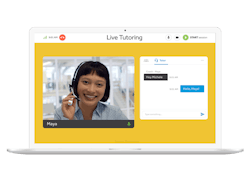Are Corporate Learning Languages Programs Necessary?
To ensure that global employees are able to speak the languages of the countries they do business in, multinationals offer education programs to their workforce. PMI ( Philip Morris International) has such a program, but in assessing how well the program was achieving its goal, decided that it needed an overhaul. Given a workforce population of 73,500 located in over 100 countries and speaking more than 80 languages, this was no small task.
As part of the company’s overall strategy that it undertook in 2008 to invest $5 billion in research on smoke-free science and products, it looked at ways to spend smarter and that included spending on its language program.
The company’s World Language training program was created for several reasons. One was for expatriate employees, and accompanying family members, who were relocating to live and work in a different country. Another driver of the program was that employees’ career growth requires proficiency in English as a condition of promotion. Employees above the first-line management level must be able to conduct business in English.
An analysis of the program found that the system had become overly complicated. There were 376 suppliers all with different deployment methods serving 2,000 employees.
Other problems included limited KPIs and uneven training at some locations where factory workers were excluded from the classes.
“Improvement was necessary and we felt that we could provide more people access to our language training and lower our costs,” explained Michael Gower, PMI's head of Capability & Supplier Management.
So, PMI chose Rosetta Stone to partner with to create a better program. Employing digital learning that recognizes the user’s ability through a Common European Framework Reference assessment, the new program is tailor to an individual’s specific needs. “We were looking for a new and better language learning model that created an all-employee experience,” said Dr. Nina Kreyer, head of Learning Innovation and Capability at PMI.
“We wanted to democratize this program both for the individual's career progression as well as organizational collaboration,” Kreyer added. "This solution would be available at the office, factory, laboratory, home, or in the field."
A measurement dashboard was created that looked at both volume and learning scores. As some manufacturing facilities only have shared computers, access to this program on personal devices was necessary. New functionality, such as one-on-one live tutoring on mobile devices was added as well.
The results of the pilot program for the new system were encouraging. In addition to saving $2 million in program costs, six and a half times more people were enrolled.
After two months, more than 10% of the population was taking advantage of this program. And after nine months the company saw a 5% increase in English and a 35% increase in German language capability.
Recently the program won a 2020 Brandon Hall Group Gold award for excellence in the Best Results of a Learning Program category as well as an award for the Best Unique or Innovative Learning and Development category.
“One of the reasons for our success was that we have a very strong communication effort,” says Gower. “We keep the momentum going and engaged with learners wherever possible.”
Involving IT early in the stage helped with issues such as data privacy, country-specific requirements and single sign-on access.
“It’s very important to be able to transform the new data available into actionable insights,” says Kreyer. “This data can help us to improve the learner experience and results.”
Moving forward Gower and Kreyer are focusing on the larger questions such as how these skills will impact business performance and how the company can speed up product development, release and new processes when language is less of a barrier.
